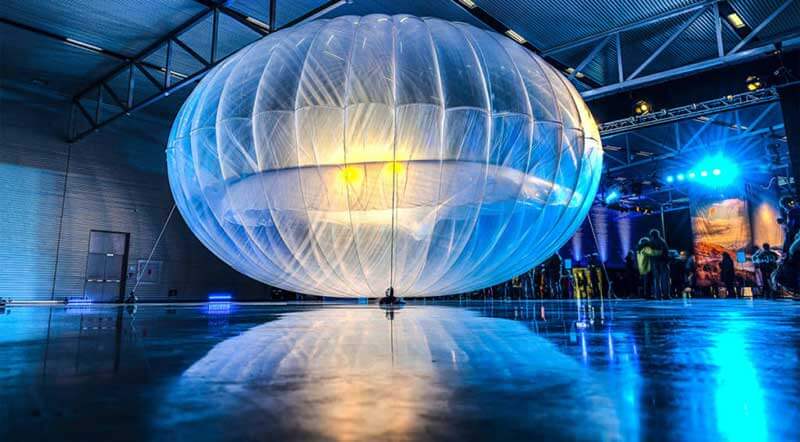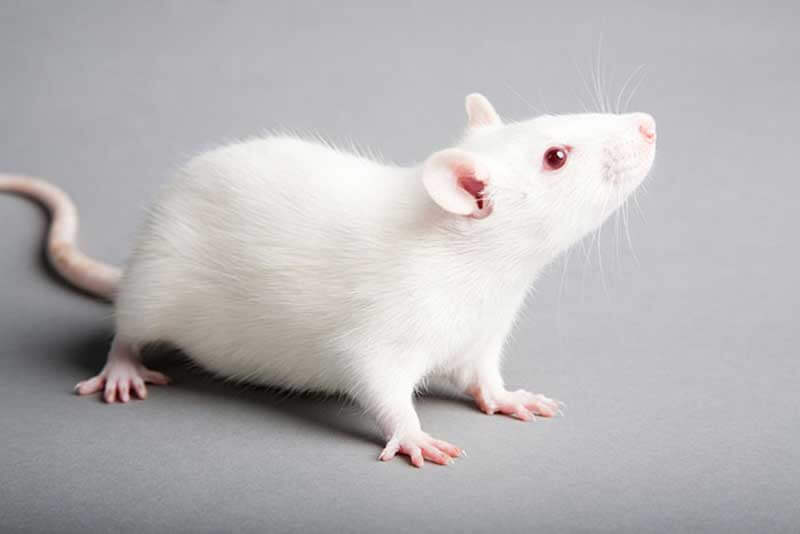- Satellite Internet connecting flood victims in Peru
- Solar-for-coal: clean energy for everyone
- The end of ageing and disease?
People matter. For trendwatchers, focusing exclusively on the future – rather than the people who’ll live in it – can be an occupational hazard. It’s easy to track the trends, follow the tech, and predict the future of innovation, without remembering why we care about technology in the first place. Technology improves lives: it lengthens them, it gives more enjoyment to the years we have, and it connects us to the people and things we care about. In this article, we keep the human element at the centre, exploring innovations that are changing our lives and our world for the better.
Satellite internet: connecting flood victims in Peru
This March, Peru suffered its worst flooding in decades, receiving ten times the rain it usually expects in spring. This deluge turned trickling streams into the stuff of nightmares, carrying whole towns away in the resulting mudslides. Spring rains in this mountainous country normally bring problems, but no one can remember a season with such severe weather. According to The Guardian, “More than 100 people have died, nearly 158,000 are displaced and 210,000 homes are damaged […] 260 bridges collapsed and nearly 3,000km of roads are unusable, cutting off hundreds of villages and towns.”
As is too often the case, this emergency fell most heavily on the least well-off, displacing people poorly equipped to relocate. It also cut communication, leaving brothers and sisters, mothers and daughters, and grandparents and grandchildren, struggling to connect with their loved ones. Struggling, even, just to hear if the worst had happened. Landlines and cell towers were down, roads were impassable, and bridges were swallowed by flood water. Families were waiting in fearful silence, and every minute without contact was excruciating. But Alphabet, Google’s parent company, rose to the occasion.
Much as Lockheed has its Skunkworks, a program to develop and test radical new technologies, Alphabet has its ‘X,’ focusing on ‘moonshot’ tech that’s innovative and creative, innovations that Alphabet “hope[s] could someday make the world a radically better place.” Devoted to solving big problems with groundbreaking ideas, X had a ready answer to Peru’s communication crisis: Project Loon. Envisioned as a global solution to unequal Internet access, Project Loon wants to place wireless routers on what are effectively weather balloons floating at the edge of space. From these drifting platforms, whole regions can be provided with wireless communication. And for people in places that lack basic Internet infrastructure, Project Loon’s promised connectivity will be a godsend.
For the victims of this spring’s disaster in Peru, Project Loon offered a chance to connect with family and friends, ending the agonising wait for news. In collaboration with a local company, Telefonica, X had been testing the system over Peru for some time. But when the disaster struck, X brought the system online, providing Internet access for people in the most affected areas: Lima, Chimbote, and Piura. According to Google, Project Loon is providing “160GB of data to tens of thousands of users, or enough data to send and receive 30 million WhatsApp messages, or two million emails.” For a company whose motto is “don’t be evil,” doing good comes as no surprise.
Project Loon is one of many trying to spread access to the Internet to those who are worst-served by high tech. Its model is unique in that it employs balloons that can be told to ‘migrate’ to an area that needs connectivity, remaining in place for months, if necessary. The system still has limits, of course, and can’t provide more connectivity than its backhaul can support. Nevertheless, similar programs have been initiated by ViaSat and OneWeb, both of which use satellites to provide potentially global coverage. The goal is to enable seamless connectivity to the billions excluded from the Internet, harnessing the power of high tech to connect lives.

Solar for coal: clean energy for everyone
If you don’t believe in the power of solar power to redefine energy, you’re not alone. Solar hasn’t yet overcome the prejudice that it’s expensive and unreliable. “We can’t fault coal companies or policy makers for not believing in solar. It’s the solar industry’s fault for not having shown that it can be cheaper and more reliable than coal,” explained Leandro L. Leviste, the President of Solar Philippines.
But in locations with high solar potential, sun-powered renewable energy is ripe to replace fossil fuels. The Philippines, a Southeast Asian country just east of Vietnam, is blessed with abundant sunshine, and Leviste’s company has promised the government cheaper electricity than coal can ever deliver, lowering rates by an astonishing 30%. This may sound impossible, but it’s real and it’s viable, driven by improvements in solar efficiency and battery storage.
Ta’u, a tiny island in American Samoa, illustrates how. Previously dependent on an expensive, dirty, and uncertain supply of diesel to fuel its generators, Elon Musk’s Tesla has developed a solar system that provides 100% of the island’s needs, day or night, rain or shine. Ta’u’s 1.4 megawatt microgrid feeds power to 60 Tesla Powerpacks that store the accumulated energy, providing consistent power to a population used to interruption and unpredictability. 5,328 solar panels charge these batteries in only 7 hours, generating enough power – in just one afternoon – for a full three days use.
That’s changing lives. As Keith Ahsoon – owner of a food store – remembers, “I recall a time they weren’t able to get the boat out here for two months […] We rely on that boat for everything, including importing diesel for the generators for all of our electricity. Once diesel gets low, we try to save it by using it only for mornings and afternoons.” This has strangled businesses and residents alike. Now, the power is consistent, readily available, and dependable.
But Musk isn’t satisfied. His vision is a world powered entirely by renewable energy. And he has a plan. His ‘Gigafactories’ produce the amazing batteries that enable Ta’u’s microgrid, and he thinks only a hundred such factories could provide the batteries necessary to meet the world’s needs. “We actually did the calculations to figure out what it would take to transition the whole world to sustainable energy.”
This isn’t far-fetched. Las Vegas, for instance, recently announced that it’s switched to renewables to power its public buildings, and while the gleaming casinos and glowing neon of its nightlife rely predominantly on coal power, it’s a proof of concept offering a welcome glimpse at the future of energy.
The end of ageing and disease?
Researchers at Harvard and the University of New South Wales have announced a startling breakthrough. As our cells age, they get worse at repairing damage caused to our DNA by radiation, and as these mistakes in our genes proliferate, they seed our cells with cancer. In other words, carcinogens like cigarette smoke and excessive sun exposure cause our bodies to slowly collect the kernels of the disease that will grow to kill us. But these scientists discovered that a chemical present in every cell, nicotinamide adenine dinucleotide (NAD+), regulates repair. The research teams were able to stimulate improved healing in mice, even after multiple dangerous doses of radiation, effectively undoing the damage that had been done and rejuvenating their test subjects.
For you and me, this might have incredible consequences. One of the major obstacles preventing human space exploration is radiation exposure. The trip to Mars, for instance, has been described as “a six month radiation shower.” With this new discovery, however, we might be able to treat or undo the damage of the flight, allowing a great leap forward in exploration. This isn’t just a promise: this research was sufficiently compelling to attract the attention of NASA, for instance. It’s real stuff – doable science.
And exciting as that sounds, these researchers think an anti-ageing pill might be only years away. By treating the mice with an NAD+ precursor, NMN, they were able to activate all of the body’s anti-ageing enzymes at once, leading to dramatic changes to the way the mice fought cancer and ageing. This matters now. We’re not talking about a some long-delayed promise of immortality or something only your grandkids will see. Human trials are scheduled to begin in only six months.
Other, recent advances in medicine are giving hope to the hopeless. Stem cells, though controversial when harvested from foetal tissue, are at the forefront of radical options for treatment. Undifferentiated bundles of potential, they’re waiting to be told what to become. As such, they’re a wonder drug of sorts, a possible treatment for a host of previously untreatable conditions. For instance, if injected into the spine of a newly paralysed patient, they quickly begin reproducing and transforming themselves, healing injured spinal tissue. Dr. Charles Liu, director of the USC Neurorestoration Centre at the university of Southern California, has pioneered the procedure. For a recent patient, Lie explained that the stem cells meant the difference between “using your hands to brush your teeth, operate a computer or do other things you wouldn’t otherwise be able to do […] having this level of functional independence cannot be overstated.”
Similarly, to test the capacity of stem cells to reverse ‘irreversible’ injury, stroke patients who suffered traumatic brain damage more than six months prior to treatment, were surgically implanted with stem cells harvested from adult donors. In contrast to what was expected for long-dead brain tissue, the stem cells quickly began repairing the patients’ damaged brains. Medical science expected that nothing could undo such profound, settled tissue destruction; remember, these weren’t patients with fresh injuries. Nevertheless, one of them, more than 70 years old at the time of treatment, soon regained his ability to walk. So surprising were the results that physicians and researchers immediately pushed for clinical trials and hope to have treatment options available soon.
Technology isn’t all about new gadgets, new toys, and greater creature comforts. At its core, it’s about changing lives and enabling this we only dreamed were possible. We think you’ll agree that these innovations aren’t just smart – they’re good, they’re kind, and they’re making the world a better place.

Share via:


